Dandelion Jelly Recipe; Tastes like Honey?
This page may contain affiliate links. More Information.
It’s true. My youngest took a taste and proclaimed the honey good.
To prepare dandelion jelly, steep dandelion petals to make a tea. Use this tea to create the jelly. Preserve the jelly by canning it, or simply put this in the fridge for immediate use.
Dandelion Jelly was a fun project to try out. I was a little leery as to how it would taste so I only made one batch the first time. It would be a bummer to use all that sugar and find we really didn’t like it. I had no reason to fear. It is delicious. I made another 2 batches to have for Christmas gifts. (Uhm….. if you are a relative of mine pretend you didn’t read that.)
There are four steps to this project…
- First make your Dandelion ‘Tea”,
- Then make your jelly out of that ‘tea’.
- Then preserve it by canning. (or put it in the refrigerator)
If you want to just store it in the refrigerator you can skip the canning portion. Just jar the jelly up and put it in the refrigerator. It will set up in there and be ready in a day or two.
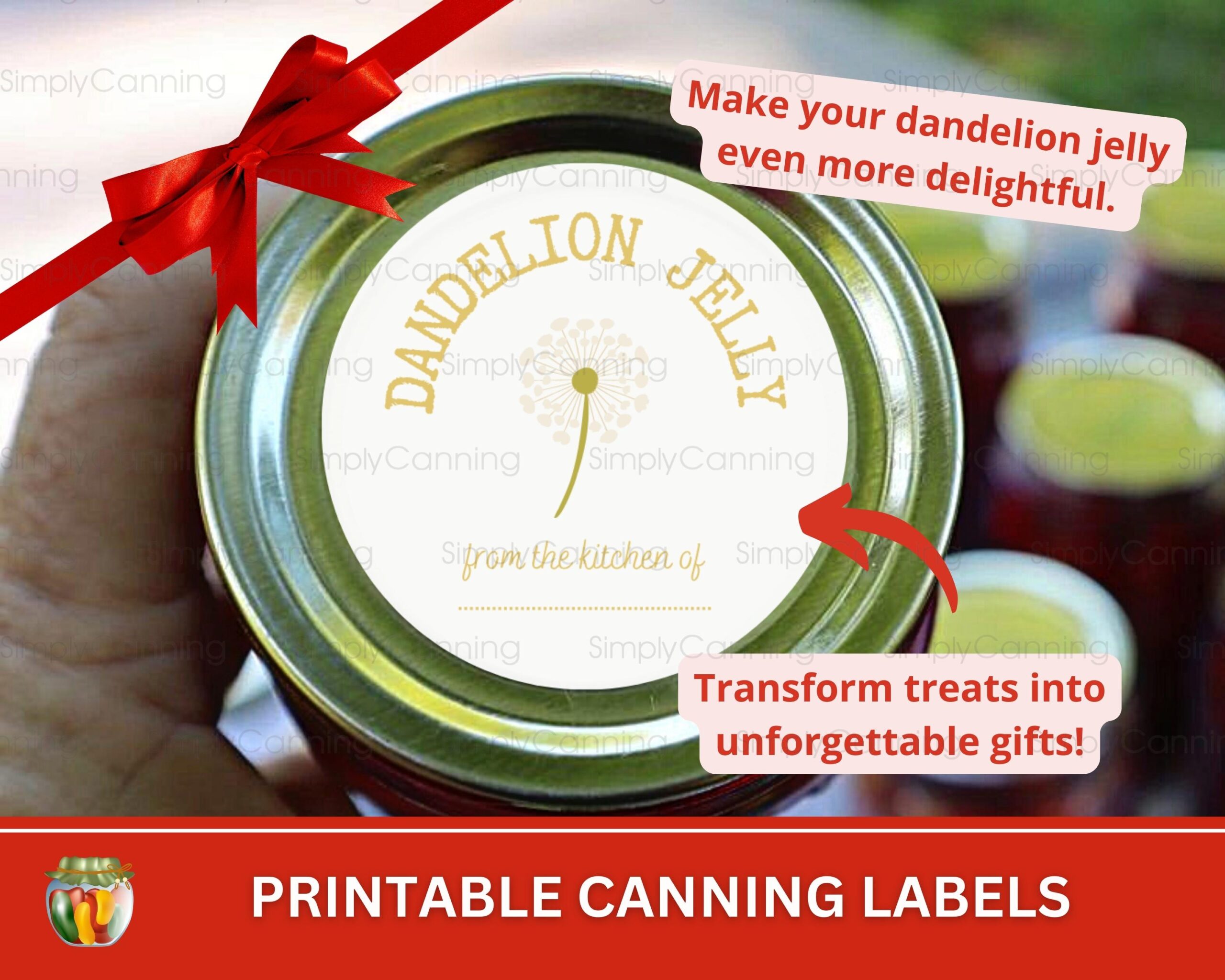
Dandelion Jelly Canning Labels
For Your Information
Apparently the Wyoming extension put out a document a few weeks ago (April 2024) stating that there are no recipes for canning dandelion jelly. There are concerns about acidity.
It also appears that many dandelion jelly recipes have recently been removed from online. This recipe was written years ago from a recipe in a document with the Wyoming extension and if my memory serves it was also on the Alaskan extension website. The recipe is no longer there. When I did a search many documents from many sources came back as unavailable. So something changed and they were removed.
I believe in making informed decisions. You of course have to make your own decisions. If you have any hesitation, then don’t make this recipe. Or make it as a refrigerator jelly then you won’t have the storage concern! Because it’s really really good!
How to Make Dandelion Jelly; detailed step by step
Know your Canner
If you are going to can your jelly please be familiar with using your canner. You have two choices for processing dandelion jelly. Steam canning would be my first option if you’ve got a steam canner. If not, a simple water bath is fine.
These posts will familiarize you with how a canner works and what steps to take to get set up for any canning project.
How to harvest dandelion flowers.
First make the ‘tea’
Pick your flowers. Be sure and pick your dandelion flowers where you know they have not been sprayed. We don’t want chemicals mixed into our jelly.
Pick at least 10 cups of dandelion blossoms. Just blossoms no stems. (they are bitter) The yellow petals is what you are after to make your tea. But for now get the whole blossom.
When we asked our neighbor farmer if we could go out in the field and pick dandelions. He said sure. Then he looked at me a little funny! Haha, I’m the crazy neighbor lady picking dandelions in his field. 🙂 I gave him a little jar of dandelion jelly as a thank you.
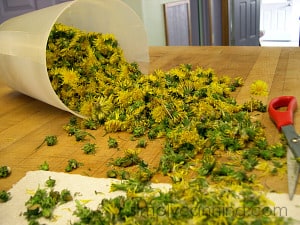
I sent my sons and a visiting friend out foraging with a gallon drink pitcher and they were back in a jiffy. Their friend probably though I was a little kooky too! I think I’m getting a reputation!
Snip off base of each flower until you have just yellow petals. You need to end up with 4 cups of dandelion petals. I tried several methods of getting the petals. I finally settled on pinching the flower and using a scissors to cut off the base. This is a little tedious… ok it is a lot tedious. But it is worth it!
Then I used my fingers to pull off any green parts that were left. It is ok if there are little bits of green.
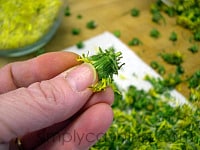
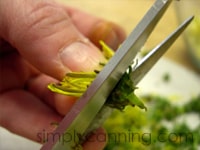
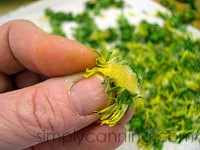
Making the tea from your flower petals
Next pour boiling water over the flower petals. (Use 1 cup water for every 1 cup of blossoms.) Let this sit until room temperature or overnight if possible.
If you brew overnight allow the tea to cool to room temperature then put it in the refrigerator overnight. When this has brewed you will have a darkish yellow dandelion “tea”.
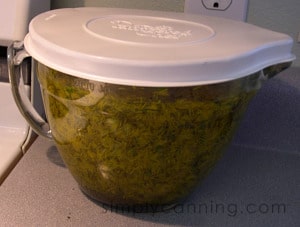
Strain the “dandelion tea” through a coffee filter or or jelly bag to remove all petals. Now you’ve got your tea for the jelly recipe.
You might wonder at the color of your tea. It’s not always a pretty yellow at this point. Dont’ worry, when you add lemon juice later in the process, it brightens it right up!
You must measure this out to the appropriate amount. Add additional water if needed to measure the correct amount for your recipe.
Three cups of liquid will make one batch jelly.
How to Can Dandelion Jelly
Gather your canning supplies. Fill your canner 2/3 full of water and begin heating the water as you make your jelly.
Which pectin should I use?
I only have instruction for using powdered pectin for this recipe. I’ve tried to use a liquid pectin, but I had issues with it setting up. I had better luck with powdered.
Having said that, if you prefer liquid pectin give it a try! Just follow the instruction on the packaging. It certainly won’t hurt to try.
Dandelion Jelly Recipe with Powdered Pectin
Ingredients
- 3 cups dandelion tea (see above on how to make your tea)
- 4 1/2 cups of sugar (yep! Lots of sugar. Remember it’s a treat, you won’t be eating it by the spoonful. well… you could... but probably shouldn’t. 🙂 )
- 2 Tbsp. lemon juice – you need this to help the pectin set up.
- 1 box powdered pectin
- yellow food coloring (optinal)
Follow the directions on your box of pectin if it differs from my directions here. Yours might have slight differences.
Add dandelion tea, lemon juice and 1 box of pectin into a large saucepan. Bring to a rolling boil. Add the sugar to the mixture and stir.
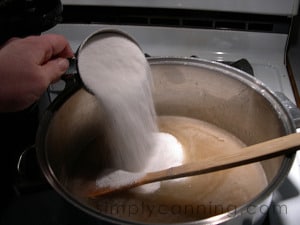
Bring back to a boil. Continue boiling 1-2 minutes. Remove from heat.
Add yellow food coloring if desired. My jelly color varies with each batch. Sometimes it’s lighter, sometimes darker yellow. If you want a strong yellow add a couple drops. It doesn’t take much! I do not add food coloring I just go with what comes out.
Process in a water bath canner.
Pour hot jelly into hot canning jars, leaving 1/4 inch headspace. Wipe the rims of the jars clean and place on the lids and screw bands.
Use pint or half-pint jars. Both are processed for the same amount of time.
Process for
- 10 minutes if you are below 6000 ft elevation.
- 15 minutes if you are above 6000 ft elevation.
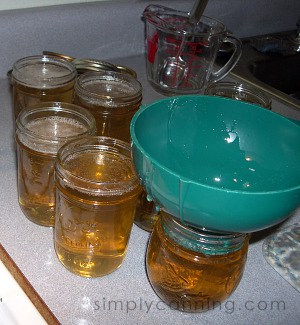
Then hide the jelly jars from the kids….
…. or you’ll find this on your counter by the end of the day. Empty jar… notice the bread crumbs all over the counter?
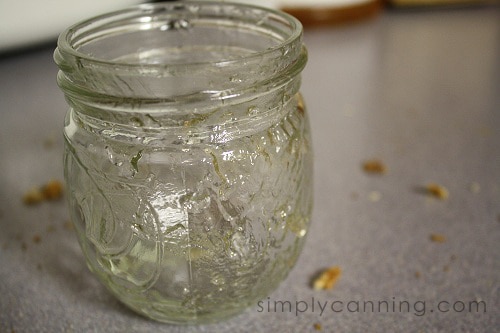
Frequently Asked Questions.
Toast! or crackers. Honestly toast or crackers is what we put it on. But you could use it just like any jelly. Add it to ice cream, yogurt, sweeten up some muffins.
I know there are benefits to dandelions. Dandelions do have vitamins and minerals. It’s been included in many herbal health teas and salves. The Jelly? I don’t think it should be considered a ‘health’ food. You’ll be eating a tiny amount at a time. And there is the sugar factor. Yep this has a lot of sugar. I’ve seen people say it has the same health benefits. But personally… I consider it just a wonderful jelly.
Yes, absolutely. Dandelions themselves are edible, it is a flower jelly. And super good too!
Video Chat
In this short video, I address a question from a viewer named TonyAnne. She asks…
“I am fascinated by your dandelion jelly recipe. One thing about the recipe I would like a little more input on. You don’t say how much water you steeped the dandelion petals in. Could you clarify? Is it four cups? Is it six cups? And is the water bath necessary? I’ve made lots of jams and jellies without that. Thanks. ToniAnne.”
Watch video chat here on youtube. Dandelion Jelly FAQ
The short answer is…. To make the tea just be sure that the petals are covered in water. About 1 cup water for each cup of petals. For the recipe, you’ll need approximately three cups of dandelion tea (the liquid from steeped petals) for each batch of jelly.
And yes you do need to process this if you want to store it on the shelf. If you just want to put it in the refrigerator then you can skip the processing shelf.
Here’s the Recipe! Short and Sweet.
For more details on each step check the article above.

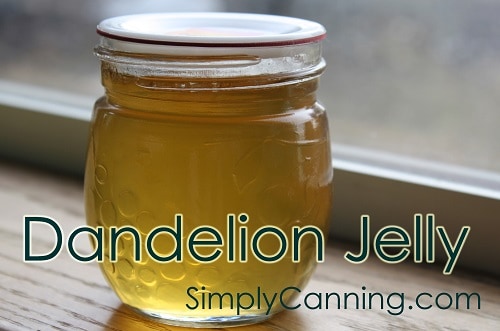

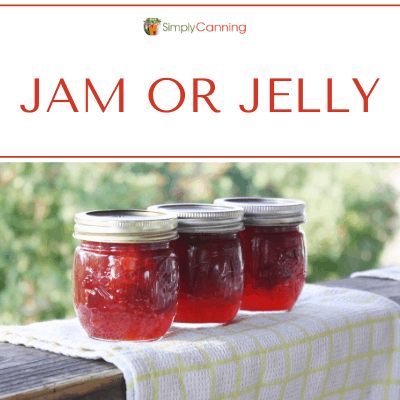
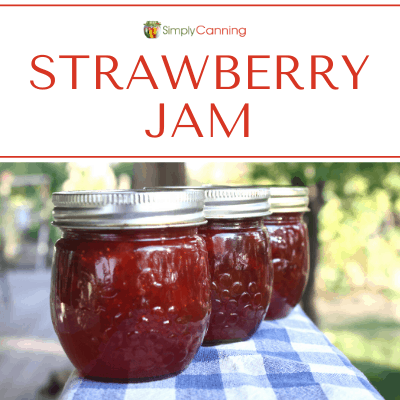
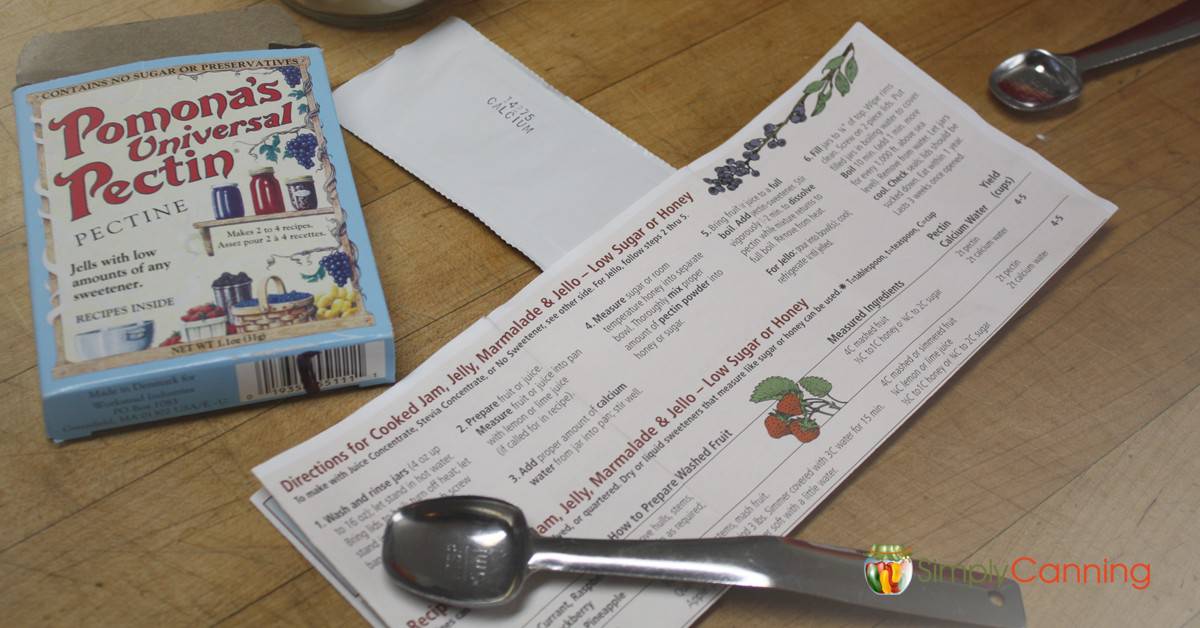
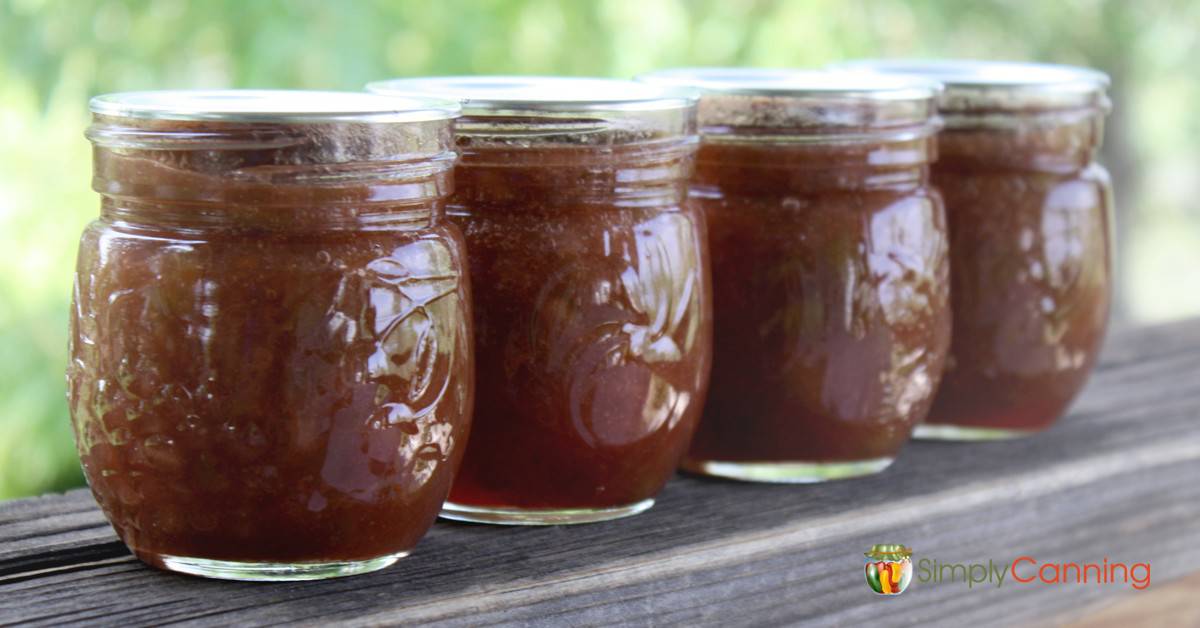
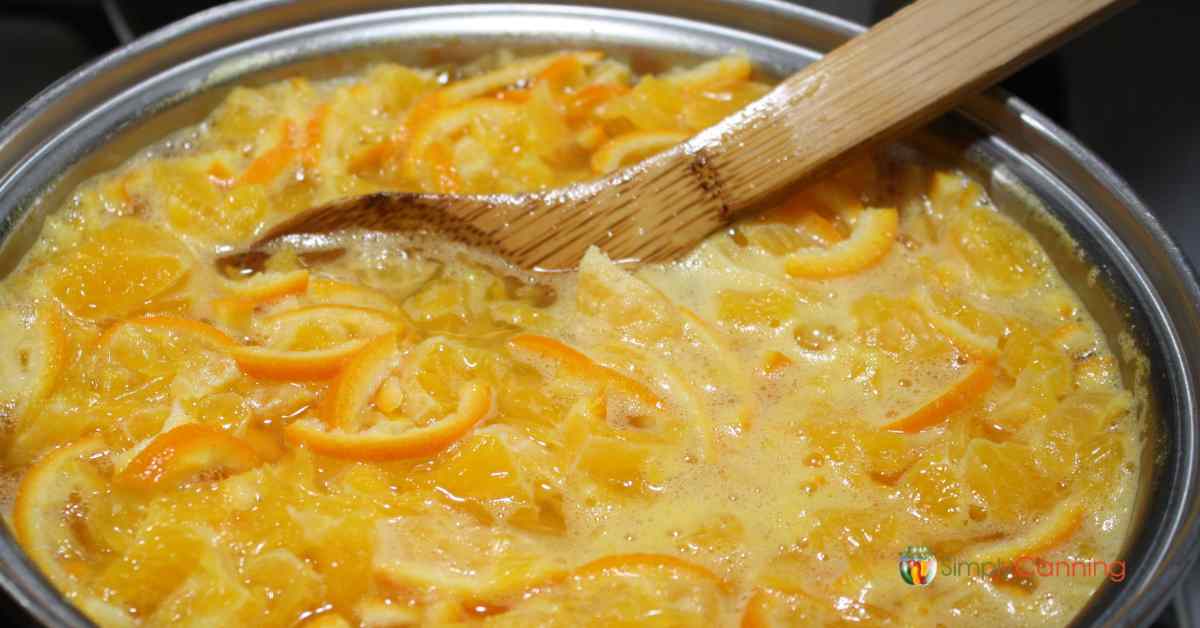
Love me some Dandelion jelly! Come back spring, I’m out!